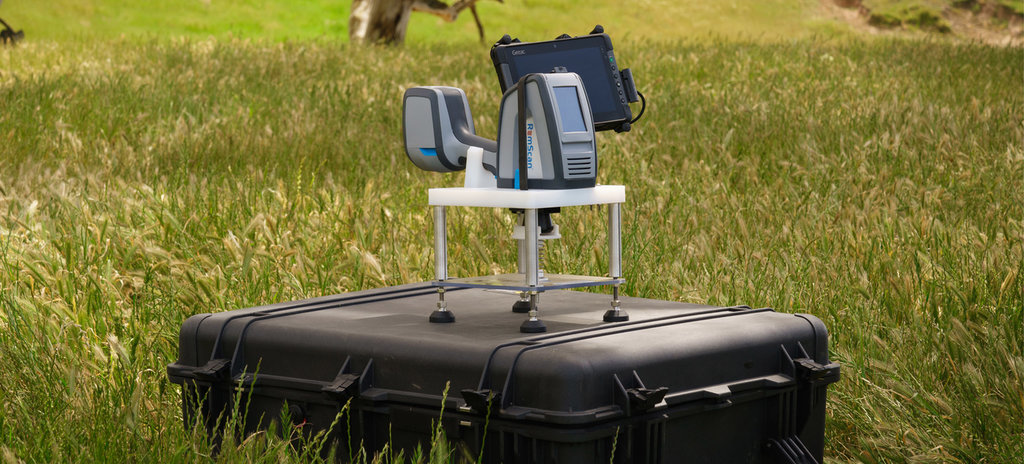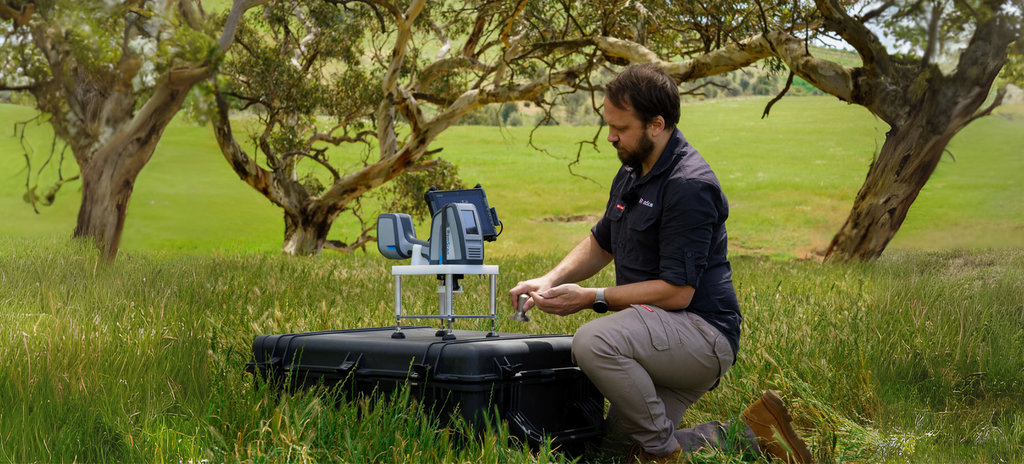Company Insight
Sponsored by Ziltek
From spill response to land rejuvenation, Ziltek redefines soil management
Standfirst...
Main image credit:
Ziltek is committed to making in-field spectroscopic analysis practical and accessible, blending innovation with practicality to ensure that their solutions offer both rapid results and reliability across a multitude of applications. Their core strength lies in delivering advanced soil measurement solutions across numerous key industries, including the petroleum, mining, and environmental remediation sectors.
The company’s partnership with CSIRO, Australia’s premier research and development institution, has led to the development of pioneering technologies that highlight their drive to make a difference through technology-driven innovation for the global oil remediation sector since 2008.
Ziltek’s flagship product is RemScan, which combines Mid Infrared Spectroscopy with cutting-edge data analytics and machine learning backed up by expert customer support. Originally designed to measure Total Petroleum Hydrocarbons (TPH) in soil, it has grown to include assessments of Soil Texture, pH, and Organic Carbon, with more on the horizon.
At the wheel is Dr Sean Manning. A physicist by training, Sean worked as a researcher in the University and Defense sectors prior to becoming Ziltek’s Chief Science Officer in 2018, tasked with enhancing their existing capabilities and discovering new technologies. As the CEO, Sean recently spoke with us about Ziltek’s purpose, traditional soil remediation in the mining industry, and how Ziltek is driving a modern approach to this critical issue.
What is RemScan and how does it work?
RemScan is a fully portable and rugged device that employs Mid Infrared (MIR) spectroscopy for soil analysis. It works by exciting chemical bonds in soil samples with long wavelength light, reflecting back a chemical 'signature' of the sample. This process effectively captures the soil's chemical fingerprint. We correlate these fingerprints with known properties, such as oil content, to build calibrations for precise measurements. MIR is analogous to X-Ray Fluorescence (XRF) technologies, except where XRF excels in elemental analysis, RemScan uncovers how these elements are arranged into chemicals and minerals. This makes RemScan ideal for on-site assessment of various soil properties, including hydrocarbon contamination, organic and inorganic carbon, soil texture, pH and more. It’s a quick and reliable alternative to traditional lab tests that can also be deployed in the field.
Why is it important? And what problems does it solve for mining companies?
In the mining world, spills happen, despite our best efforts. Diesel, hydraulic fluid, oils, and lubricants are the usual suspects. With RemScan, you can quickly assess and manage these spills on-site. This tool not only saves time and money but also helps responsible stewardship of the land. Its portability and quick results are crucial for efficient decision-making and effective remediation. After spills have been assessed, there is often a requirement to remediate the contaminated soils. RemScan can also assist in these efforts by providing real time measurements as the remediation activities are progressing, which enables tight process control and an efficient use of resources.

Caption. Credit:
How does RemScan differ from the typical practices?
The typical way to assess contaminated soils is to send jars of soil to a lab, often with many days to weeks turnaround, and costing $50 - $100 per sample. This is costly in terms of both time and money, hampering fast decision making and putting negative pressure on the number of samples sent for analysis. Whereas RemScan provides instant on-site results, with each additional measurement costing nothing more than the 30 seconds it takes to make it. Users not only have access to faster, less expensive information, but also much more data than they would normally get, meaning better decision making and more certain outcomes.
Do you have any case studies or use cases showing how RemScan has been implemented in the field?
Our technology is currently at the forefront of major oil and gas projects, notably in oil field remediation efforts in Kuwait, addressing Gulf War legacies, and in environmental cleanup operations in the Niger Delta and Sumatran oil fields. It also plays a key role in various United Nations peacekeeping missions across Africa and in contamination assessments in Australia, Europe, Asia, and North America. In the mining sector, RemScan is essential for rapid spill response and precise assessment of contamination extents, and crucial for preventing unnecessary soil excavation. During the remediation phase, its ability to monitor progress in real-time, especially in remote locations far from laboratories, makes it indispensable for ensuring optimal treatment efficacy.

Caption. Credit:
Does RemScan have capabilities or potential beyond contaminated soils?
Yeah, it sure does. In 2019, COVID-19 offered Ziltek a unique window for dedicated research and development. This period was crucial in advancing soil health techniques, particularly in the realm of soil organic carbon measurement. This advancement is integral to both soil health assessment and the monitoring of carbon sequestration. RemScan now proficiently measures carbon stocks, potentially enabling landowners to earn carbon credits and actively contribute to achieving net zero carbon emissions. Our focus has now expanded from merely remediating soil to rejuvenating it, aiming not only to rid the soil of contaminants but also to boost its health and productivity, thus fostering landscapes that are not only clean but also more fertile and vibrant.
Looking ahead, we aim to enhance RemScan for broader use within the mining and resources industry. We have projects in the pipeline on mineral analysis where our MIR technology can provide valuable information regarding the chemical makeup of minerals. This information, especially in conjunction with other in field technologies such as XRF can be used to guide mining and exploration activities and shorten the time it takes to obtain analytic results. This will provide fewer interruptions to operations and less downtime.
What is the big picture strategy for Ziltek?
Ziltek's strategy is to broaden the scope of RemScan to new markets. We are problem solvers that create solutions for our end users. Anywhere the physics of light-matter interactions overlap with industry driven analysis needs, particularly when cost and logistical constraints hinders traditional methods, RemScan shines. We are strongly focused on technology advancement, and we are seeking investment to facilitate further commercialization and global impact.
If you're currently managing hydrocarbon-contaminated soils or foresee the need for such management, consider connecting with us to see how RemScan can streamline your process, saving time, money, and reduce project complexity. For those engaged in land rejuvenation projects, we're here to assist. We're also keen to explore potential collaborations in mineral analysis and identification through R&D projects.
If any measurement-related challenges are hindering your operations due to cost or time constraints, we're keen to explore custom solutions tailored to your needs. Reach out to see how Ziltek can facilitate your projects measurement requirements accurately, efficiently, and in greater detail.
Contact information
Ziltek Pty Ltd
8 Tooronga Ave,
Edwardstown SA 5039
Tel.: +61 8 7081 5523
Email: info@ziltek.com
Web: www.ziltek.com